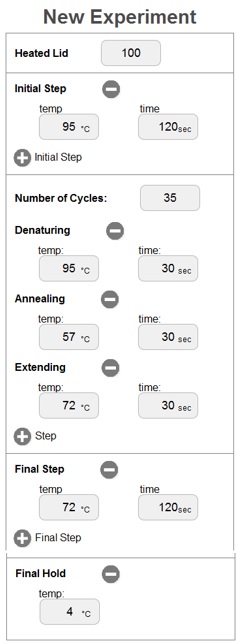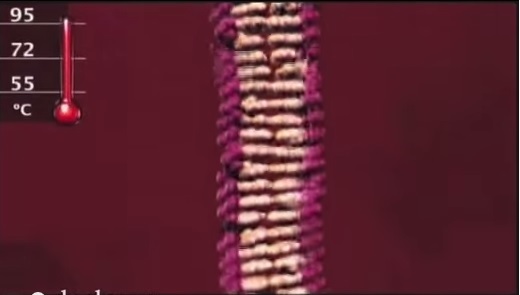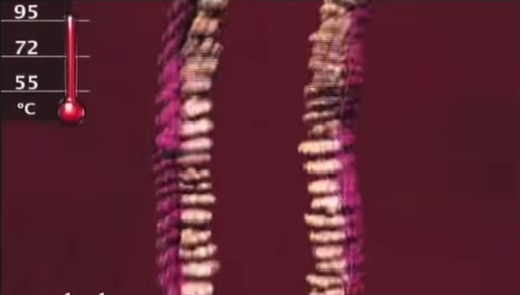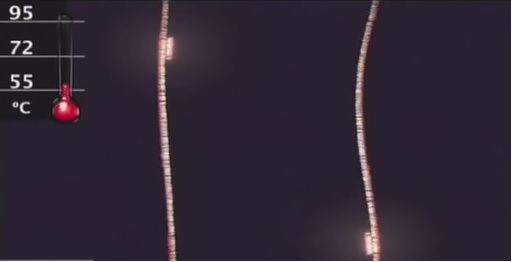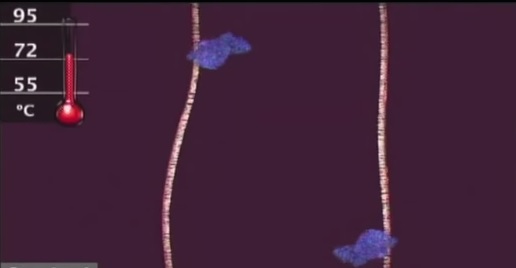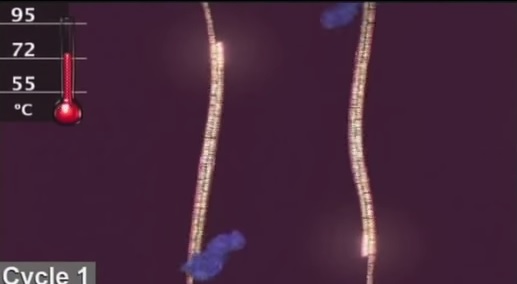BME100 s2015:Group6 12pmL4
| Home People Lab Write-Up 1 | Lab Write-Up 2 | Lab Write-Up 3 Lab Write-Up 4 | Lab Write-Up 5 | Lab Write-Up 6 Course Logistics For Instructors Photos Wiki Editing Help | ||||||||||||||||||||||||||||||||||||||||||
|
OUR TEAM
LAB 4 WRITE-UPProtocolMaterials
Step 1: Gather all materials: A PCR tube rack, 8 PCR tubes of 50 μL of PCR mix, 1 PCR tube of positive control, 1 PCR tube of negative control, 3 PCR tubes of Patient 1 DNA, 3 PCR tubes of Patient 2 DNA, PCR tube rack, micropipettor, micropipette tips, plastic cup, lab coat and gloves, and an OpenPCR machine. Step 2: Label the sides of the tubes with Group 6's modified tube labels and place them in the rack. Step 3: The 8 PCR tubes already containing the PCR reaction mix will be used in the the PCR machine. The provided DNA primer mixes will be pipetted into these 8 PCR reaction mix tubes. Step 4: Transfer 50 μL of positive control into tube #1. Step 5: Transfer 50 μL of negative control into tube #2. Step 6: Transfer 50 μL of Patient 1 (ID: 11105) DNA sample into tubes #3, #4, and #5. Step 7: Transfer 50 μL of Patient 2 (ID: 22923) DNA sample into tubes #6, #7, and #8. Step 8: Now, there are 100 μL of complete PCR reaction in each tube. Step 8: Ensure the lids are closed tight. Place the tubes in the PCR machine’s heating block and once all slots in the machine are filled, start the machine cycle. Note: Ensure to replace pipette tip with a clean one between every pipette.
Research and DevelopmentPCR - The Underlying Technology Function of PCR Reaction Components The primary components of a polymerase chain reaction (PCR) include template DNA, primers, taq polymerase, and deoxyribonucleotides (dNTP's). They each serve a unique and equally important function in the PCR process. Template DNA contains the sequence of DNA that needs to be replicated and serves as a template for the making of the complementary strand. Primers are designed to match to the target segment of DNA to be copied, bind to a region on that DNA sequence and to start the DNA replications. Taq polymerase is thermostable DNA polymerase that adds complementary nucleotides onto the DNA strand. DNA polymerase continues until it gets to the end of the strand and falls off. Deoxyribonucleotides (dNTPS's) are dATP, dTTP, dCTP, and dGTP that build up DNA. They are used to create billions of DNA copies.
The initial step of thermal cycling requires the DNA sample to be heated to 95°C for two minutes. This initial cycle at high temperature serves to unwind the DNA sequence in preparation for step two. Next, the DNA must be denatured at 95°C for thirty seconds resulting in two single-sided strands of DNA. The DNA must then anneal at 57°C for thirty seconds. In this step, the primers bind to their complimentary base pairs on the DNA, completely surrounding the target sequence to be copied. After annealing, the DNA must extend for thirty seconds at 72°C. The taq polymerase binds to the primer locations and extends the second strand of DNA until it has reached the end of the original target DNA strand. This process of denaturing, annealing, and extending is repeated for a total of 35 cycles. This allows for production of millions of copies of the target DNA. The final step involves a two minute hold at 72°C. This extra time is to ensure that there are no single strands of DNA remaining. Lastly, a final hold at 4°C is done so the new DNA segments can be stored temporarily. The lower temperatures are used so that the new DNA segments do not begin to separate again.
DNA consists of 4 different base pairs: Adenine, Thymine, Guanine, and Cytosine. They are commonly abbreviated as A, T, G, and C; respectively. Adenine and Thymine pair together, and Guanine and Cytosine pair together. Base pairing occurs during the annealing and extension steps of thermal cycling. In the annealing step, the mixture is cooled, allowing the primers to bind to their complimentary sequence in the template DNA. During extension, the DNA is heated, causing the DNA polymerase to extend the primers adding the nucleotides, using the target DNA as a template. Source: http://www.uvm.edu/~cgep/Education/PCR.html
1) The temperature is increased to 95°C for 30 seconds. The strands of DNA separate into single strands 2) The temperature is decreased to 57°C and primers bind to complimentary matches on the target DNA sequence 3) The temperature is increased to 72°C and taq polymerase binds to the primers and add nucleotides to extend the second strand
Source: http://www.dnalc.org/view/15475-The-cycles-of-the-polymerase-chain-reaction-PCR-3D-animation.html
| ||||||||||||||||||||||||||||||||||||||||||





